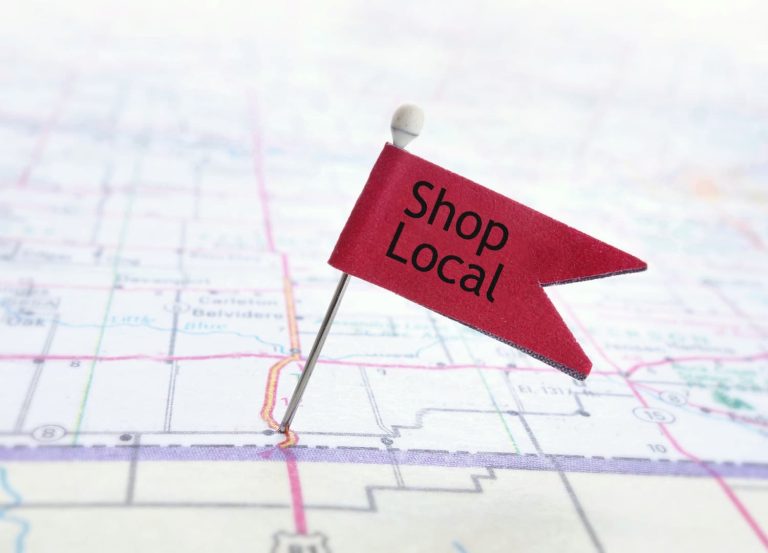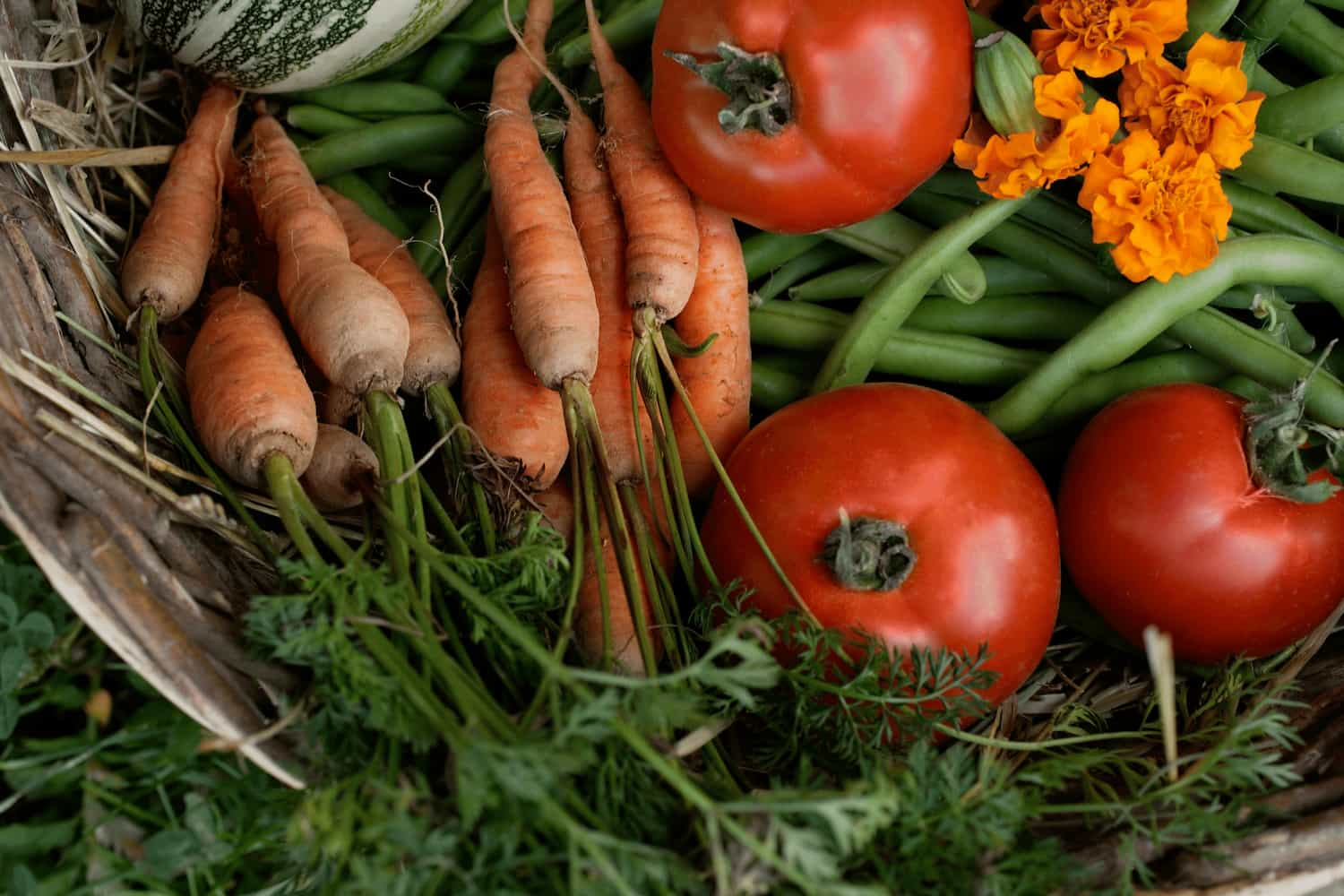We want to help and support you on your journey to becoming an eco-conscious shopper. It can take time, patience, and a lot of learning, which is why we have put together 12 of our Top Green Shopping Tips to help get you started!
We encourage you to read through these top tips and see if you are already doing some of these. If so, great job! If not, that’s okay too, everyone will be starting somewhere different. You can start incorporating these into practice right away, or you can introduce them over time.
Remember, progress over perfection!
BUY LOCAL
When possible, shop local and purchase from local suppliers and merchants. There are many benefits to shopping local too; a significantly greater portion of our money is cycled back into the local economy (local jobs, events, and charities), small businesses donate 2.5x more per employee to local charitable causes compared to large chains, and reduced environmental impact with 26% fewer automobile miles on the road (Sustainable Connections).
BUY SEASONALLY
Purchase food that is in season locally. Eating local seasonal food means that it doesn’t have to travel from other parts of the world, saving significant fossil fuels otherwise used during processing, refrigeration, and transportation.
BUY USED
You may be surprised what you find at thrift stores, second-hand shops, and online. These are great ways to find items that are “new to you” and have a low impact on the environment. You may also be able to find what you need by finding local trade/swap/share groups online too. Check out our helpful resources for information about the local sharing economy.
USE REUSABLE BAGS
When you do have to shop, remember to bring reusable bags. This includes reusable produce bags, bulk food bags, and containers too.
PAY ATTENTION TO PACKAGING
Choose waste-free options and items in recycled packaging. At the grocery store, remember that glass, tin, and cardboard are better than plastic. Get creative with packaging as well; reuse jars, use boxes for storage or gift wrapping, and more. If possible, choose package-free items or visit refilleries.
AVOID BROWSING
Shopping can become a habit, and the more time spent shopping the more likely you are to buy stuff (likely stuff you don’t really need). Avoid the temptation of impulse purchases by shopping only when it is necessary.
CHOOSE ECO-FRIENDLY ALTERNATIVES
When you have to shop, choose eco-friendly options and alternatives wherever possible. Ex: cloth bags, beeswax wraps, reusable containers, cloth diapers, refillery products, shampoo bars, etc.
SHOP WITH A LIST
Creating a list not only helps with organization and efficiency but can also help avoid making unnecessary impulsive purchases. Make a list and stick to it.
EVALUATE THE NEED
Take time to reflect on the need. Do you really need it? Check out our “Should I Buy It? Guide to Mindful Consumption” to help determine if something is actually needed.
SAY NO TO SAME DAY/EXPEDITED SHIPPING
Shopping online can sometimes be a good option for the environment, but when you choose same day/expedited delivery the environmental impact multiplies. Unless you need it ASAP, request standard delivery.
AVOID UNNECESSARY RETURNS WHEN SHOPPING ONLINE
There is no such thing as free returns, someone has to pay, and it’s often the environment. Buying extra items with the plan to return some doubles the CO2 emissions for that purchase and only 50% of returned items get resold. Read product descriptions and size guides carefully to avoid buying more than you need or intend to use.
BE AN INFORMED CONSUMER
Do your research before buying. Understand your options, different standards of manufacturing, how products are made and disposed of, and more. Ask questions of businesses and manufacturers to understand their social and environmental footprint. This can take time and patience, so take it one purchase at a time.

Shopping Green at the Grocery Store
Shop local
Support local farmers by visiting Farmer’s Markets, food coops, and local farm stands. And when you need to use a grocery store, use the options closest to you over the ones across town.
Choose Seasonal
Choose options that are local and seasonal to reduce your food miles. Calculate your Food Miles to understand just how far your produce travels.
Consider Integrated Pest MGT, Low-Pesticide, and/or Organic Options
Organic isn’t always best and it isn’t always possible. If you can, ask your local farmer about their pesticide practices. Opt for organic (if possible) to avoid pesticides that can be harmful to the environment.
AVOID PLASTIC
Choose options without plastic packaging, wherever possible. Choose a head of lettuce over bagged or boxed greens, or a whole fresh pineapple over pre-cut and packed in plastic, etc. Plastic is complex and can be difficult to recycle. Opt for glass, tin, and cardboard which is easier to recycle, wherever possible.
REUSABLE BAGS
Bring reusable grocery bags and produce bags to reduce plastic use.
CHOOSE REFILLERIES
Skip all waste created from packaging by visiting refilleries for home products and bulk food. These are often great spots to find zero and low-waste alternatives.
REDUCE OR ELIMINATE MEAT AND DAIRY
It’s no secret that the meat & dairy industries are among the highest producers of GHGs in the food industry Reducing or eliminating meat will lower your eco-footprint. Choose lower GHG emitting meats like poultry or pork over GHG-heavy beef.
DO SMALLER GROCERY SHOPS MORE FREQUENTLY
More frequent smaller shops mean that you are buying less at once and therefore less likely to over shop, which can result in food waste. Smaller grocery trips may also allow you to walk or bicycle too.
PLAN YOUR MEALS FOR THE WEEK
Meal planning allows you to buy only what you need and know what you will use, eliminating potential food waste.



